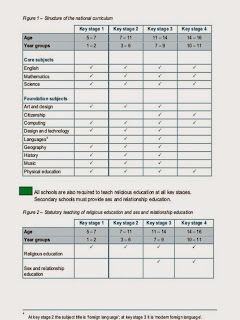The Australian Curriculum
Australia, as a continental country, has a significant curriculum which develops their education systems. General capabilities of the Australian Curriculum are addressed explicitly in the content of the learning areas. They play an important role in realizing the goals set out in the Melbourne Declaration on Educational Goals for Young Australians (MCEETYA, 2008) -that all young people in Australia should be supported to become successful learners, confident and creative individuals, and active and informed citizens.
In the Australian Curriculum, students become literate as they develop the knowledge, skills, and dispositions to interpret and use language confidently for learning and communication in and out school and for participating effectively in society. Literacy involves students in listening to, reading, viewing, speaking, writing, and creating oral, print, visual and digital texts, and using and modifying language for different purposes in a range of context.
In the Australian Curriculum, students become literate as they develop the knowledge, skills, and dispositions to interpret and use language confidently for learning and communication in and out school and for participating effectively in society. Literacy involves students in listening to, reading, viewing, speaking, writing, and creating oral, print, visual and digital texts, and using and modifying language for different purposes in a range of context.
The Declaration forms the Australian Curriculum into dynamic and challenging education systems for both teachers and students. The Melbourne Declaration identifies essential skills for twenty-first century learners in literacy, numeracy, information, and information and communication technology (ICT), thinking, creativity, teamwork and communication. It describes individuals who can manage their own well-being, relate well to others, make informed decisions about their lives, become citizens who behave with ethical integrity, relate to and communicate across cultures, work for the common good and act with responsibility at local, regional, and global levels. To become successful learners in any learning area depends on being able to use the significant, identifiable, and distinctive literacy that is important for learning and representative of the content of that learning area.
The Australian Curriculum includes seven general capabilities:
- Literacy
- Numeracy
- Information and Communication Technology (ICT) Capability
- Critical and Creative Thinking
- Personal and Social Capability
- Ethical Understanding
- Inter cultural Understanding.
The Circle of General Capabilities in the Australian Curriculum is in the picture below:
 |
| The General Capabilities in the Australian Curriculum (www.acara.edu.au) |
General capabilities materials for schools and teachers
These materials are presented as a resource to help teachers understand the curriculum:
- Develop a shared understanding of the nature, scope and sequence of the general capabilities in the Australian Curriculum
- Confirm their understanding of intended learning wherever general capabilities are identified in learning area content descriptions and elaborations
- Plan for and guide students' development of the general capabilities in school and classroom learning programs.
Teaching and Assessment of general capabilities in Australia:
- Teachers are expected to teach and assess general capabilities to the extent that they are incorporated within each learning area
- State and territory school authorities will determine whether and how student learning of the general capabilities will be further assessed and reported
- For some students, it may be necessary to adjust the levels of complexity and the processes they use to develop capabilities. However, the role and place of general capabilities in the Australian Curriculum remain the same for all students.
Nature of general capabilities in Australia
In the Australian Curriculum "capability" encompasses knowledge, skills, behaviors and dispositions. Students develop their capability when they apply knowledge and skills confidently, effectively, and appropriately in complex and changing circumstances, both in their learning at school and in their lives outside school. The encouragement of positive behaviors and dispositions underpins all general capabilities. Within individual capabilities, specific behaviors and dispositions have been identified and incorporated into each learning continuum as appropriate.
Although English language is an international language and it is their national language, the Australian considers that the learning of this subject is an important and valuable thing. The interesting point of the Australian Curriculum is that the study of English is central to the learning and development of all young Australians. It helps create confident communicators, imaginative thinkers and informed citizens. It is through the study of English that individuals learn to analyze, understand, communicate with and build relationship with others and with the world around them. The study of English helps young people develop the knowledge and skills needed for education, training and the workplace. It helps become ethical, thoughtful informed and active members of society. In this light, it is clear that the Australian Curriculum considers the learning of English plays an important part in developing the understanding, attitudes and capabilities of those who will take responsibility for Australia's future.
